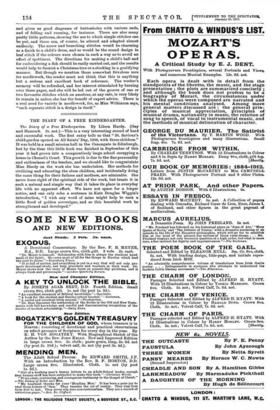EMBROIDERY STITCHES.
Embroidery Stitches. By M. E. Wilkinson. (Herbert Jenkins. 5s. net.)—Needlewomen, or, as the writer of this book prefers to call them, needle-artists, will here find a great deal of useful informa- tion, clearly and practically set out. There are pictures and descriptions of two hundred stitches, arranged alphabetically. Some of them will of course be familiar to most workers, while "others will serve to exemplify how, in process of working, fresh stitches may be evolved from old ones, or how, when originality gains ground, entirely new stitches become apparent and workable." She wisely includes plain sewing in her examples,
and gives us good diagrams of buttonholes with various ends, and of felling and running, for instance. There are also many pretty little patterns, showing the use to which simple stitches can be put, and these can, of course, be altered and adapted almost endlessly. The arrow and branching stitches would be charming as a finish to a child's dress, and so would be the round design in leaf stitch if the colours were chosen in such a way as. to avoid an effect of spottiness. The directions for making a child's ball and for embroidering a fish should be easily carried out, and the results would help to furnish a Christmas tree or a stocking in a gratifying manner. But though we mention these somewhat frivolous uses for needlework, the reader must not think that this is anything but a serious and excellent book of reference. The worker's memory will be refreshed, and her interest stimulated by turning over these pages, and she will be led out of the groove of one or two favourite stitches which an amateur, at any rate, is very likely to remain in unless she has the benefit of expert advice. There is a real need for variety in needlework, for, as Miss Wilkinson says, "each separate stitch is a design in itself."



























































 Previous page
Previous page